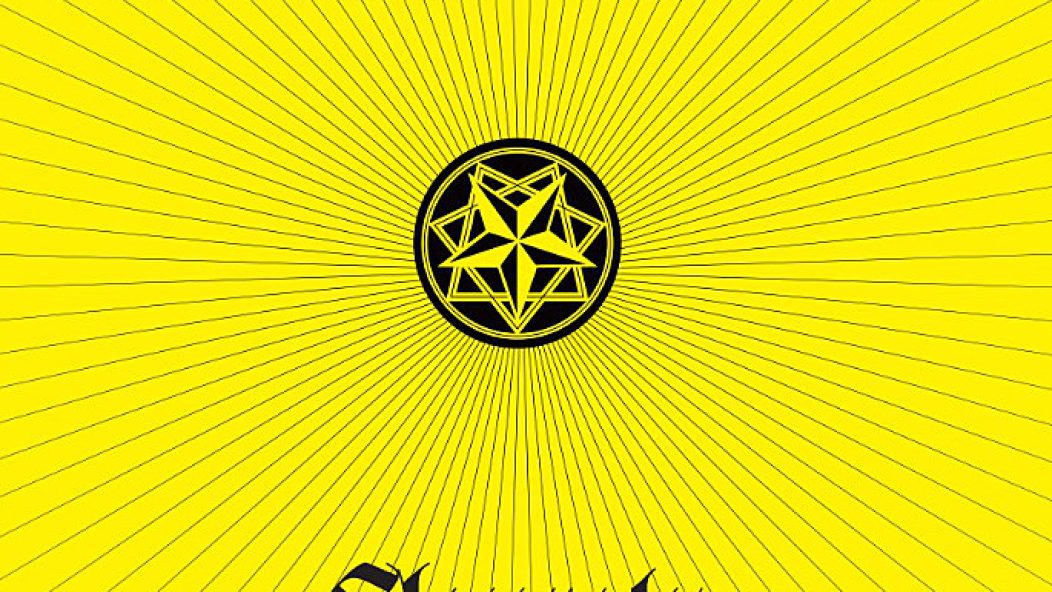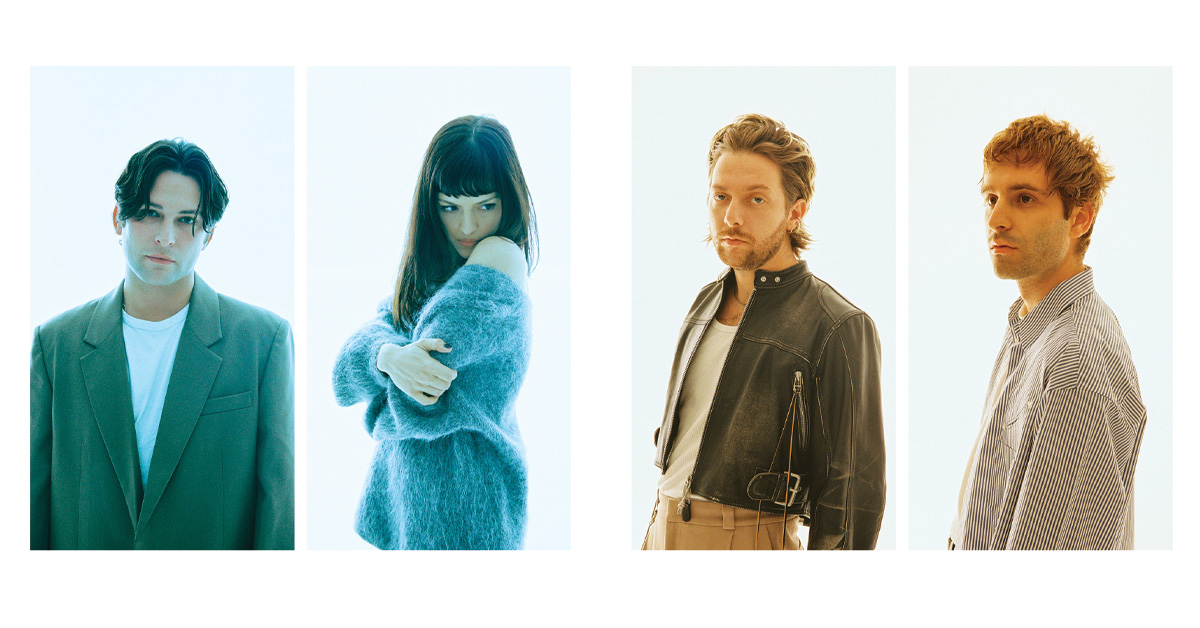
"Inquietum" Sums Up a New Decade of Fleurety

…
Inquietum could be considered the Chinese Democracy of weird black metal, if just for the amount of time and frustration which went into making it. Seventeen years after the controversial, intricate Department of Apocalyptic Affairs, what could be considered the most extreme and modernist release of the “turn of the century strangeness”/post-black metal era, Inquietum is the result of ten long years’ work. Now separated by the Atlantic Ocean and the vast expanse of the United States, Svein Egil “Zweizz” Hatlevik and Alexander Nordgaren’s long-standing project, which dates back to 1991, took on a new dynamic. Composition from two distant ends of the planet can be difficult, especially after years of rehearsal-based songwriting, but a desire to continue, in these cases, necessitates flexibility and some sort of evolutionary character.
The actual progression of Inquietum is also unique and follows a linear timeline. Composed of four EPs (Ingentes Atque Decorii Vexilliferi Apokalypsis, Evoco Bestias, Et Spiritus Meus Semper Sub Sanguinantibus Stellis Habitabit, and Fragmenta Cuinsvis Aetatis Contemporaneae) which were written and recorded between 2007 and 2017, this collection (which the band considers an album as opposed to a compilation) follows the band’s evolution and self-rediscovery across an uncertain time.
With uncertainty comes a reclamation, at least for Fleurety, and Inquietum opens with an air of nostalgia — a rerecording of the first proper song on their 1991 demo A Darker Shade of Winter. It is obvious Fleurety was making a statement about the dynamic of their early years. “We found out that we could make simplicity work,” says Hatlevik. “We wouldn’t have thought that when we were 17,” and there was certainly a giant leap in their composing style between their demos and the complex, longform songs of their full-length debut, Min Tid Skal Komme. In fact, Fleurety’s small discography is defined by these leaps and massive shifts in style, which makes Inquietum‘s return to square one all the more intriguing.
Across its nine tracks is a more subtle evolution, concentrating more on songwriting and atmosphere than the bonkers, avant qualities which made them legendary. Of course, there is still that strange, Elfman-esque character which defines the lion’s share of Fleurety’s body of work. For something so simply composed, there are the adventures into blues, pop, and jazz which make the music all the more fitting for this black metal album’s neon yellow cover, designed by Trine + Kim Design Studios. Across its songs is the band more comfortably experimenting with other genres, avoiding the spastic nature of their previous works, though spending at least a year writing each song, or so Zweizz says, connotes a much more careful nature. Toward the end, though much more rigid and defined at its core, Nordgaren and Hatlevik begin to approach the post-modern madness of their earlier works, but Inquietum‘s progression shows a more natural arrival to that sound. Does the future hold more hyperactive, cartoonish music from this duo? Only time, the time which defined Inquietum, can tell.
The colorful Inquietum compendium will be released by Aesthetic Death on August 21st. Listen to the fully remastered audio below and read an interview with Svein Egil “Zweizz” Hatlevik below.
…
…

…
What initially drove you to release these four EPs as a collection? Are they interconnected?
Yes, they are. Back in 2004, Fleurety was a dormant band, due to Alex and I living far away from each other. We didn’t really know how to keep the band running. Then our friend Kim Sølve (of the Trine + Kim Design Studio) asked us if we wanted to be part of a compilation album that he was planning. So we re-recorded a song from our first demo that we’d always wished to be recorded properly. That led to a situation where once each year we would meet and make music. That’s when we decided that we should make a series of EPs that would make sure there was a certain continuity. And eventually those recordings would constitute an album. The result: Four singles with the same design template and a common sense of obscurity. Personally I’m very happy with how this album has turned out as a kind of documentation of how our music has become increasingly more tormented from 2004, when the first song was recorded, until 2015, when the last song was completed.
How do you feel your music became more tormented?
“Tormented” is maybe kind a black metal communications staff type of word, but what I meant was that the music was becoming more dissonant, denser, more piercing, perhaps. I like the development from the 2004 retrospective Fleurety to the 2015 contemporary band. The title of the fourth and last 7″ was Latin for “Fragments of a contemporary time” (don’t know if that is a good English translation, I’ve only thought of this title in Norwegian and Latin until now). It doesn’t get any darker than “Fragments of a contemporary time”, does it?
Could you go further into how Fleurety developed over the course of the decade-long EP series? Did you update your approach and/or did the philosophy toward the project itself change?
What started as a revival of our teenage band, making revised versions of old material, turned into a renewed vision of what the music of Fleurety is supposed to be; eventually we understood that we wanted to record a full album in one session, which we eventually did. This album was recorded in 2014/15, it’s called The White Death, and it’s ready to be released soon. Getting back to the process we went through from 2004 to 2015: After we’d recorded two songs from the nineties, I went on to recruit an octopus style drummer, which I’d seen perform with his band The White Tiger Prepade, whose style I really dug. Alex made two new songs on his guitar, which turned out to be back-to-basics minimalism. This worked as nothing less than a breakthrough; we got the affirmation that we still knew how to make songs. Then after that it all turned more DIY, and the last three tracks from the period were recorded by ourselves. We had the confidence to make the dissonant and distorted style to greater lengths.
Opening track “Descent into Darkness” looks back to the opening track of your first demo, “Black Snow” (featuring former Thorr’s Hammer vocalist Runhild Gammelsæter very convincingly emulating Alexander’s then-trademark shrieks). Though you had mentioned a desire to give the song a proper recording, how did it feel to revisit a song so far back in your catalog?
I can’t really remember any feelings connected to the “going back in time” aspect. I guess some of the riffs sounded a bit goofy, being made in a very different frame of mind. This recording was made in 2004, so it’s a long leap to remember that today. One thing I do remember, though, is of a more practical nature: At first we didn’t know how to recreate the vocals from the demo, so we thought the best thing would be to go back to the original cassette four track master tape, and grab the vocal track off that tape. However, that didn’t prove successful, so we decided to bring in Runhild, and we were very happy with her delivery. Another aspect with the original recording was that it was made in a bomb shelter below the school where we grew up, all concrete walls and heavy steel doors type of reverb. We didn’t think much about that at the time, but later I’ve learned to appreciate how those conditions affected the sound of that old demo.
It certainly seems like revisiting this old material led to that re-affirmation of songwriting. Since there was such a lengthy break between Department of Apocalyptic Affairs (2000) and the first EP (Ingentes Atque Decorii Vexilliferi Apokalypsis, 2009), was there a doubt that you would be able to write concrete songs beyond this re-recording?
Yeah, I guess that’s what we found out. If you consider the song “Animal of the City” from the Evoco Bestias EP, you’ll hear it’s only two riffs, a very simple song, our simplest song ever, if you don’t count some intermezzos here and there. So we found out that we could make simplicity work. We wouldn’t have thought that when we were 17. Just listen to Min Tid Skal Komme, with its 10-12 minute songs and 20 riffs per song approach, and you’ll know what I mean.
With this rediscovery of the simple songwriting approach which pre-dated your debut full-length (Min Tid Skal Komme, 1996), did it alter your then-future songwriting trajectory? Was the initial intent to create music whose complexity met and expanded upon your full-length and EP works?
Back in the day when we made the material for Min tid skal komme, we rehearsed frequently. That made it possible to make these complex songs, and we had this notion that we wanted to avoid repetition. That’s why a lot of the songs are like parades of riffs. But, as we grew older, I assume that this kind of defiance towards the norms of songwriting like we know it from pop music faded, and we grew more interested in verse/chorus structures. And living on different continents doesn’t make to rehearsals per week feasible. Anyway, we didn’t really have very specific ideas of how we wanted the new material to sound. We wanted it to be more true to the music we made in our teens, as opposed to the music you can hear on Department of Apocalyptic Affairs, which was very much influenced by a wish to renew our expression and distance ourselves from the “black metal” style, which (I, at least, thought) had become very stale and downright embarrassing. But with the material after that, we wanted to go back to the proverbial roots.
Is there still that sense of embarrassment concerning what most “old guard” black metal musicians considered the stagnation of the style around the turn of the century? The greater sense of “creating music which was outside/was not black metal” was certainly a prevalent thought during that time period (Grand Declaration of War, Perdition City, The Sham Mirrors, Rebel Extravaganza, et cetera).
I think most people of the “old guard” wanted to be avant-garde at that time, yes. I keep stressing in more or less every interview how different black metal seems, how different your notion of black metal is, if you still think of Transylvanian Hunger as one of the newer Darkthrone albums. So the idea that black metal can be almost anything stems from a time when there was no mold for the genre. Around Y2K I was also involved with Dødheimsgard, so, personally I felt that was my black metal outlet, and Fleurety was heading in the general direction of “something else”. So we did the Department of Apocalyptic Affairs album, which was basically an experiment from beginning to end. Now, almost 20 years after that was recorded, I kind of feel no one else know better to make “music in the style of Fleurety”, so that’s what we do. It’s a rather nice style of music, I think, so we’ll keep doing that for the foreseeable future.
There is still that air of “avant-garde” to this newer, increasingly “tormented” music, just as there was in your earliest efforts. Do you feel that the avant-garde approach and Fleurety are inseparable?
The term “avant-garde” is difficult, because it’s meant to refer mindset of always going to new places, but if we kept replicating ourselves infinitely, people would still refer to us as “avant-garde” – I think. But we enjoy employing different methods of songwriting, and we’ll keep experimenting, so I think it’s safe to say yes.
Looking back on Inquietum and placing it side by side with the impending full-length of all-new material, does the full-length carry the same sort of “processional”/evolutionary feel as Inquietum, or is it more based in one period of time?
The new album was recorded in one month (more or less) in a house that I’ve been renting in Oslo the last couple of years, and most of the material was written during that stay in that house. I had some songs I’d written for the drums, and Alex had emailed me three-four riffs that he’d been recording. We would sit upstairs writing the songs, then we’d go downstairs to record them. We kept repeating this cycle every night, until we had eight songs recorded. So it was one very focused month, not making one song each year. So it’s very much, in my head at least, affected by what the process was like, but the process behind The White Death is the opposite of the process that led to Inquietum.
Was this lengthy process — one song each year — revitalizing? Was it the kick start Fleurety needed after a long silence, or was it solely adherence to a specific approach?
Yes, it was. It was the only way we could do it. We didn’t want to do the kind of sending huge audio files approach, that didn’t feel right. It had to be with the kind of strange atmosphere that’s always there when we are doing Fleurety. We might go for the “Internet band” approach at a later time, but it hasn’t felt appropriate this far.
How will Fleurety move forward after “Inquietum” and “The White Death”? Is there a plan for the future?
I’m hoping to start recording the drums for some new songs and send the tracks off to Alex pretty soon, so I guess we are indeed becoming an Internet band. Then, after a while, I hope there will be enough material for a new album, ready for release in 2019 or so. But I’ll advise people to take that time schedule with a pinch of the finest salt.
…
Follow Fleurety on Facebook.
…










